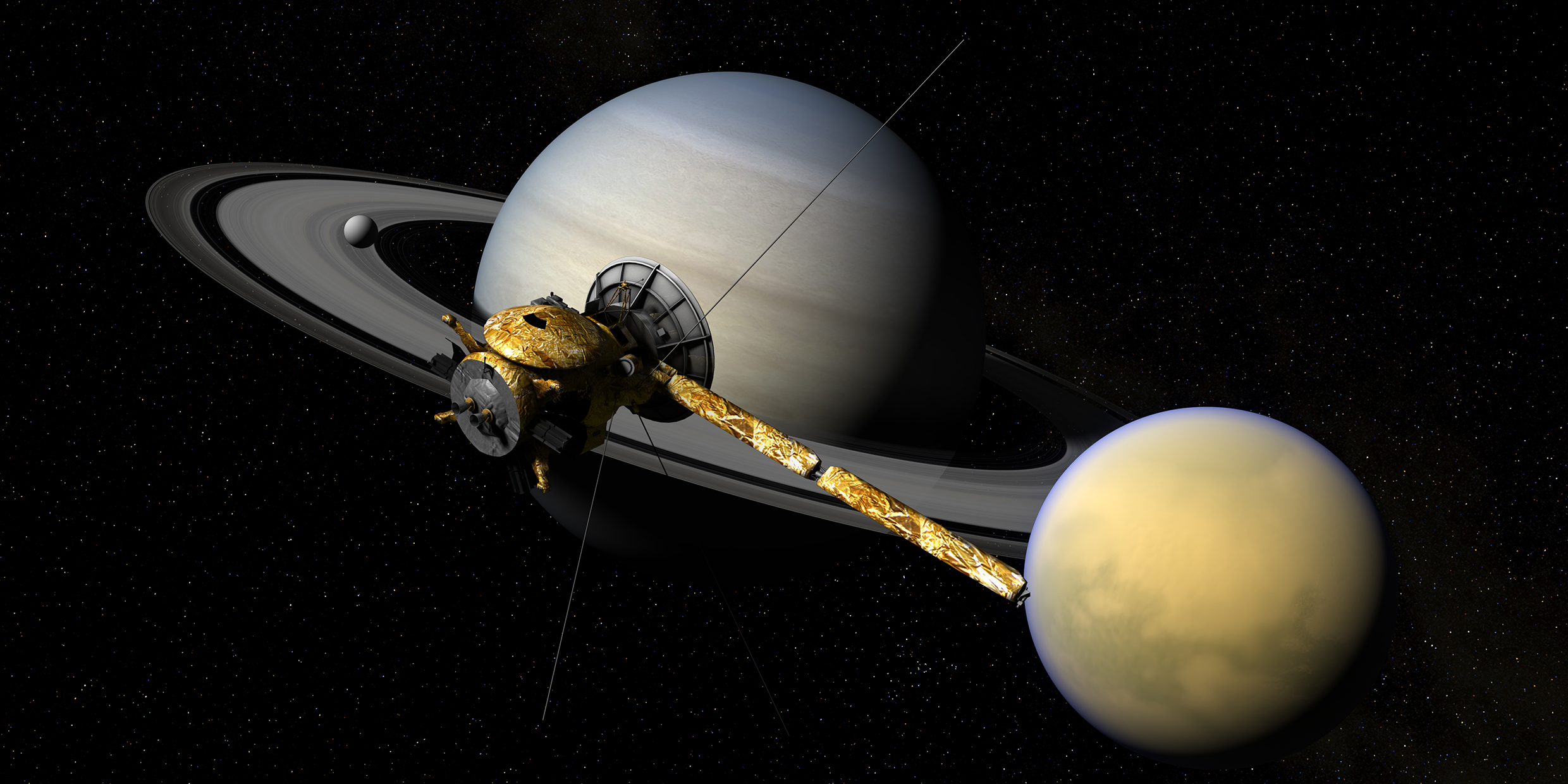Originally published 29 March 1999
On the evening of February 23, Venus overtook Jupiter in the evening sky. The two planets gleamed together in a pairing of rare closeness. Both fit neatly into the field of a small telescope, with all four of Jupiter’s Galilean moons.
During the weeks that followed, the planets maintained a dazzling show as Venus climbed to join Saturn and Mercury moved toward Jupiter. On the evening of March 19, Venus, Saturn, and a thin crescent moon made a lovely conjunction.
Of course, these gatherings of planets were only apparent. In real space the planets were separated by vast gulfs of emptiness.
Almost every school room has a solar system poster or dangling mobile showing the respective sizes and positions of the planets in their orbits around the sun. These posters and mobiles — with the planets lined up like soldiers on parade — do little to help a student comprehend the true scale of the solar system.
To get a better idea of the emptiness of space, imagine the sun — our blazing star, nearly a million miles in diameter — as a small grapefruit on the goal line of a football field.
The Earth is a grain of salt on the 10 yard line, in orbit about the sun.
Venus is another salt grain on the 7 yard line and Mars a salt grain on the 15 yard line, in their own solar orbits.
Jupiter is a pea on the 50 yard line, and Saturn a smaller pea at the far end of the field.
(On this same scale, by the way, the nearest star is another grapefruit halfway across the country.)
Now imagine that NASA engineers on the salt-grain Earth, on the 10 yard line, decide to send a spacecraft to pea-sized Saturn, nearly a football field’s length away. The mission is called Cassini after the 17th-century astronomer who discovered the dark gap in Saturn’s rings.
In our football-field solar system, the spacecraft is infinitesimally small; in real life, it is about the size and weight of a school bus. It carries a probe to drop onto the surface of Titan, Saturn’s largest moon.
It is not possible with existing rocketry to make the craft move fast enough to travel directly to Saturn, without taking decades to get there. So the engineers try a little orbital magic.
Instead of directing the craft toward Saturn, they aim for Venus — - in the opposite direction. The craft darts near Venus and gets a gravitational boost of energy at the expense of that planet, like a stone whirled in a sling. It coasts out past the orbit of Earth on a fat elliptical trajectory, then falls toward Venus again, where it gets another kick.
By this time the spacecraft has made nearly two orbits of the sun.
Now the spacecraft climbs again, away from the sun, meeting Earth on the 10-yard line for another gravitational boost, then on to Jupiter out there on the 50-yard line for one more increment of energy. Then it’s on to Saturn.
If you can imagine the journey of the infinitesimally small spacecraft in the empty spaces of the football-field solar system — with salt-grain and pea-sized planets moving in circular orbits about the grapefruit sun — then you have a notion of what the real Cassini spacecraft is doing.
Cassini was launched in October 1997. It made its first flyby of Venus in April 1998. It will encounter Venus again in June of this year, then whiz past Earth in August. The craft will meet Jupiter in December 2000, and finally make it to Saturn in 2004, more than six-and-a-half years after launch.
The untold story of Cassini is the art and craft of navigation — the finesse with which the spacecraft is caused to take advantage of gravitational assists from planets, looping and darting like a swallow, hitching a roundabout way to its target.
In each encounter with a planet, Cassini steals a bit of energy. The spacecraft’s two flybys of Venus and one of Earth provide the equivalent of 75 tons of fuel. After the initial launch towards Venus, only small adjustments to the trajectory are necessary to direct the craft towards its next rendezvous.
Cassini could not get to Saturn in a reasonable amount of time without the help of gravitational assists. Other contemporary spacecraft are using the same navigational flair to visit asteroids and comets, even in circumstances where a direct journey is technically feasible. The motive is simple: The flights are cheap. By using the gravitational kick of planets, including repeated flybys of Earth, smaller launch vehicles and less fuel are required for the journey.
As April begins, Saturn follows Jupiter and Mercury into the twilight, but Venus will continue to blaze in the evening sky. Mars rises in the east not long after sunset, brighter than it has been for a decade. As we enjoy the visible planets, we can imagine with our mind’s eye that flotilla of unseen machines in space, making their circuitous ways to the objects of their investigation, stealing a kick where they can, stitching a wonderful embroidery into the fabric of the night.



